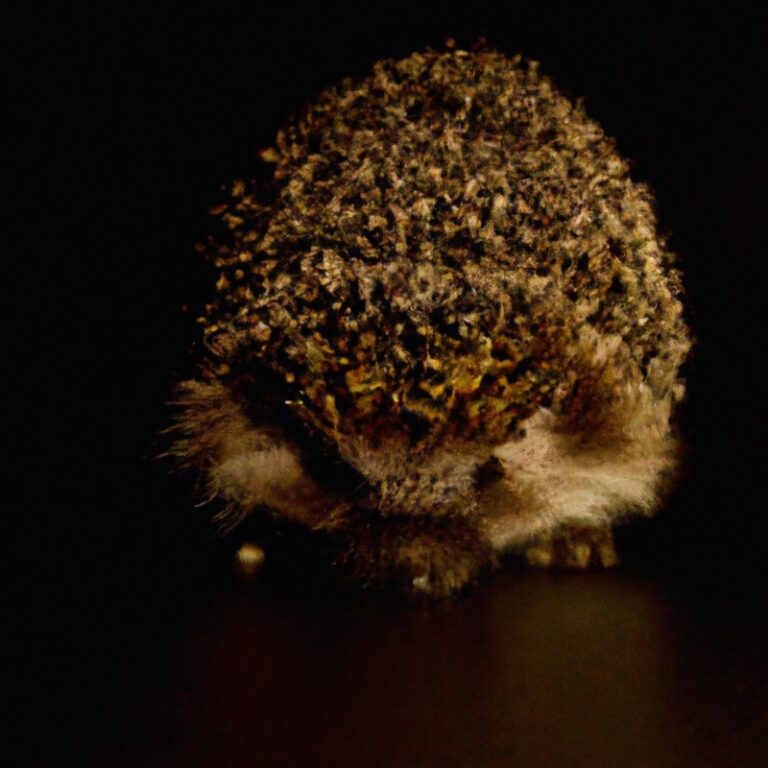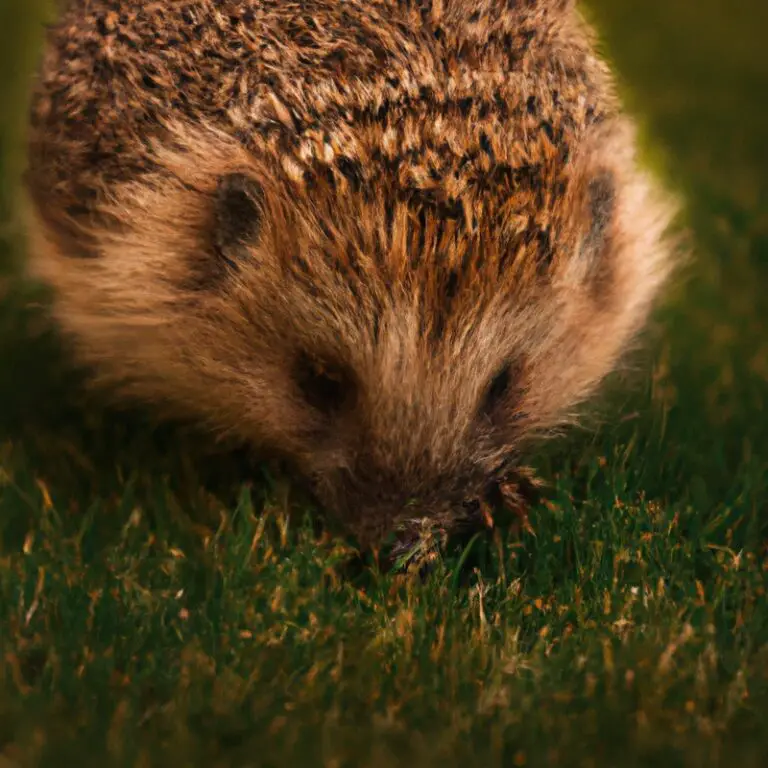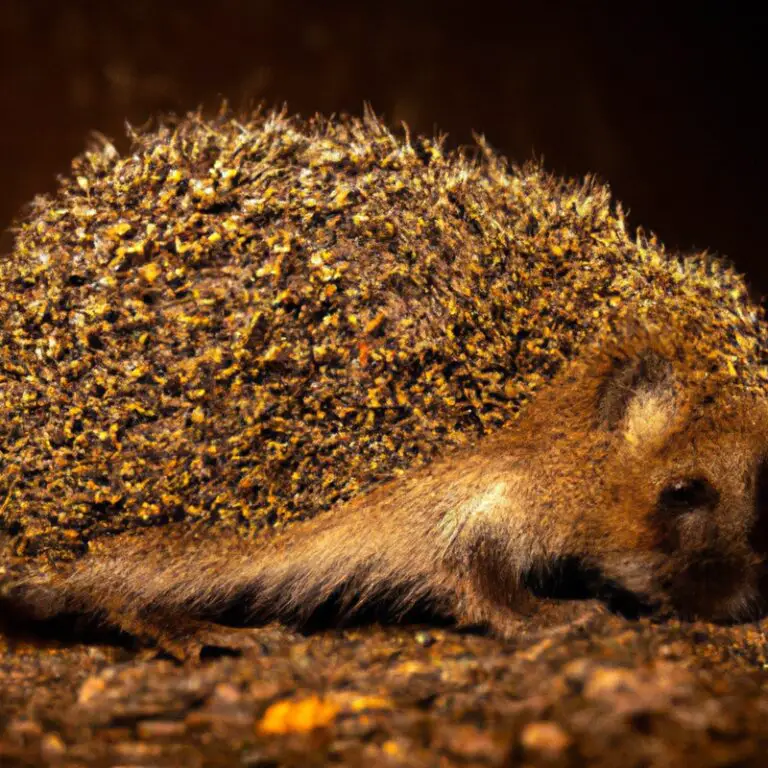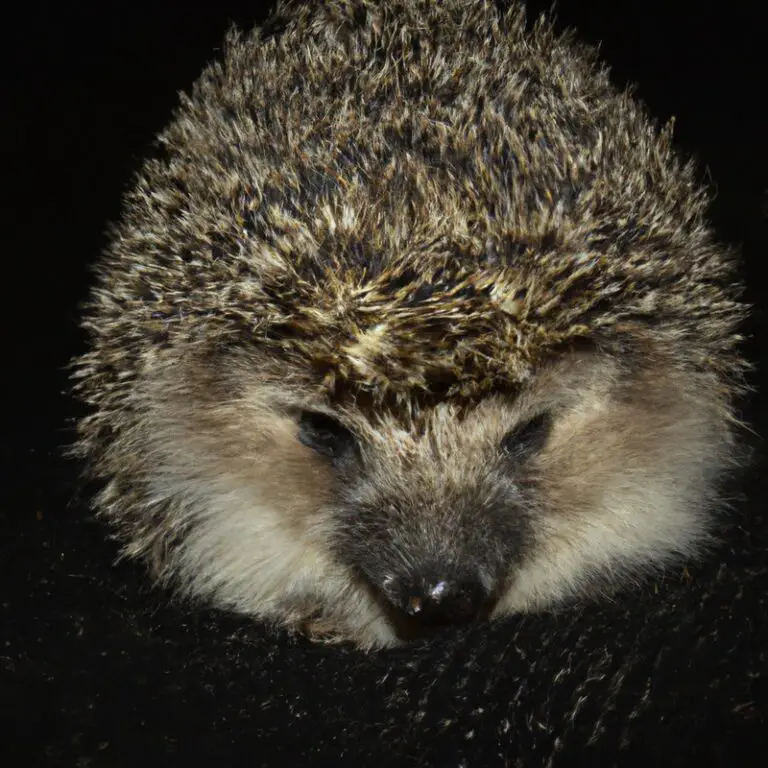How Do Hedgehogs Locate Food Sources?
Key Takeaways:
- Hedgehogs use their acute sense of smell to locate food sources.
- They rely on their excellent hearing to locate movement and potential prey.
- Hedgehogs also use their sharp eyesight to identify and locate edible plants.
- They rely on their foraging behavior and exploration to find varied food sources.
Are you curious about how hedgehogs manage to locate their next meal? These spiky little creatures have some impressive techniques for finding food sources in their environment.
In this article, we’ll delve into their keen senses of smell, hearing, and touch, exploring how they utilize these senses to sniff out their meals and detect the movement of potential food sources.
We’ll also dive into their natural foraging behavior and discuss the impact of environmental factors on their food search. So, if you’ve ever wondered where hedgehogs get their meals from, keep reading!
| Methods | Description |
| Sense of Smell | Have a keen sense of smell to detect food scents |
| Hearing | Can hear the movement of small prey or rustling of leaves |
| Sense of Touch | Use their whiskers to feel their surroundings and locate hidden insects |
| Sight | Can see well in low light conditions, helps them spot movement |
| Movement and Exploration | Explore their environment to find potential food sources |
Sense of Smell
Hedgehogs have an acute sense of smell.
They rely on their sense of smell to locate food.
Hedgehogs’ acute sense of smell
Hedgehogs have an acute sense of smell.
This helps them locate food sources in their surroundings.
They can detect scents from a long distance, allowing them to find insects, grubs, and other small prey.
The sensitivity of their nose helps them navigate their environment and find food even in the dark.
This exceptional sense of smell is a key survival tool for hedgehogs.
How hedgehogs use smell to locate food
Hedgehogs use their keen sense of smell to locate food. Their noses are specially adapted to detect a wide range of scents in their environment.
As they forage, hedgehogs rely on their sense of smell to sniff out insects, worms, and other small creatures hiding in the grass or under leaves.
Their ability to detect odors helps them navigate towards potential food sources, ensuring they can satisfy their hunger. With their acute sense of smell, hedgehogs are able to find their next meal with impressive accuracy
Factors that affect hedgehogs’ ability to smell food
Hedgehogs’ ability to smell food is influenced by various factors. Firstly, their nasal structure plays a significant role.
Hedgehogs have well-developed olfactory receptors that allow them to detect odors in their environment.
Additionally, the cleanliness of their snouts is crucial, as a blocked or dirty nose can hinder their sense of smell. Diet also affects their olfactory capabilities, as certain foods can enhance or diminish their sensitivity to odors.
Finally, environmental factors such as humidity and wind speed can impact how far hedgehogs can detect food scents.

Sense of Hearing
Hedgehogs have excellent hearing abilities.
Hedgehogs’ excellent hearing ability
Hedgehogs have an excellent hearing ability that allows them to navigate their environment and locate food sources.
Their sharp sense of hearing helps them detect subtle sounds and vibrations, enabling them to locate prey such as insects and small rodents.
Hedgehogs’ ears are designed to capture and amplify sounds, allowing them to be highly sensitive to their surroundings.
This remarkable hearing ability plays a crucial role in their survival and makes them skilled hunters in the animal kingdom.
How hedgehogs use hearing to find food
Hedgehogs use their acute sense of hearing to locate food sources. They have excellent hearing, which helps them detect the movement and rustling sounds made by prey such as insects, worms, and snails.
Hedgehogs are especially sensitive to high-pitched sounds, allowing them to pick up on the faintest noises made by potential food items.
This keen sense of hearing enables hedgehogs to navigate their environment and find their next meal.

Factors that influence hedgehogs’ ability to hear food sources
The factors that influence hedgehogs’ ability to hear food sources primarily revolve around their physical characteristics.
Their large ears and sensitive hearing make them excellent at detecting sounds in their environment.
Additionally, the presence of any obstacles or background noise can affect their ability to pinpoint food sources accurately.
Hedgehogs also rely on their sense of smell to reinforce their ability to locate food, as they may use scent cues to guide them towards their next meal.
Overall, a combination of hearing and smelling abilities plays a crucial role in hedgehogs’ successful food hunting.
Sense of Touch
Hedgehogs have a keen sense of touch which they use to locate food.
Their tactile abilities allow them to navigate their environment and find prey.
Hedgehogs’ tactile abilities
Hedgehogs have remarkable tactile abilities that help them navigate their surroundings and find food.
Their spines, which are sharp and prickly, play a crucial role.
By using their spines to brush against objects, hedgehogs can gain information about their surroundings, including the location of potential food sources.
Additionally, hedgehogs have sensitive whiskers that allow them to detect vibrations in the ground, helping them locate small creatures like insects.
These tactile abilities make hedgehogs excellent foragers and allow them to find food even in the dark.
How hedgehogs use touch to locate food
Hedgehogs use their sense of touch to locate food.
When searching for food, they rely on their whiskers, which are highly sensitive to vibrations and textures.
By brushing their whiskers against objects, they can detect movement or changes in their surroundings.
This helps them locate prey, such as insects or small animals, and even identify edible plants.
Their keen sense of touch enables them to find food sources in their environment without relying solely on their other senses.
Factors affecting hedgehogs’ ability to sense food through touch
Hedgehogs’ ability to sense food through touch can be influenced by several factors.
For example, their sense of touch may be affected by the thickness of their spines and the sensitivity of their skin.
Hedgehogs with thicker spines may have a reduced ability to feel the texture of food, while those with more sensitive skin may be better at detecting vibrations and the presence of prey.
Additionally, environmental factors like temperature and humidity can also impact a hedgehog’s ability to detect food through touch.
For instance, extreme temperatures can make their skin less sensitive, affecting their ability to locate food sources accurately.
Regular grooming is also essential for hedgehogs, as dirt or debris on their spines can hinder their ability to sense food effectively.
Overall, these factors play a role in how hedgehogs rely on touch to find their next meal.
Foraging Behavior
Hedgehogs have innate instincts that guide them in finding food.
They employ various techniques to forage for food effectively.
Hedgehogs’ natural instincts for finding food
Hedgehogs have natural instincts that help them locate food sources.
These instincts are honed through their keen sense of smell and hearing.
Hedgehogs use their sense of smell to detect the presence of food, often relying on their strong sense to locate insects, snails, and other small prey.
They also have excellent hearing, which allows them to locate movement and rustling sounds made by potential food sources.
These natural instincts serve as a guide for hedgehogs in their quest for sustenance in their habitats.
Common foraging techniques used by hedgehogs
Hedgehogs have a few common foraging techniques they use to locate their food sources. Here are some of them:
- Scent detection: Hedgehogs have a keen sense of smell and rely on it to locate their prey. They can pick up on the scent of insects, worms, and other small creatures.
- Hearing: Hedgehogs have excellent hearing and can detect the rustling sounds made by their prey. They can locate food sources by listening for movement in the undergrowth or grass.
- Digging: Hedgehogs are adept diggers and will use their sharp claws to excavate the ground in search of food. They can dig up worms and insects from the soil or leaf litter.
- Opportunistic feeding: Hedgehogs are opportunistic feeders, meaning they will eat a wide variety of food sources. They will scavenge for fallen fruit, bird eggs, and even small mammals if the opportunity arises.
By using their sense of smell, hearing, and digging abilities, hedgehogs are able to locate and access their food sources in their natural habitat.
Factors that influence hedgehogs’ foraging behavior
Hedgehogs are influenced by several factors when it comes to their foraging behavior. These factors include the availability of food sources in their environment, the time of year, and their individual energy needs.
Hedgehogs will search for food in areas where there is an abundance of insects, worms, and other small prey.
Additionally, they may adjust their foraging behaviors based on the season, as certain food sources may be more readily available during specific times of the year. Lastly, hedgehogs’ energy requirements can also influence their foraging patterns, as they may need to spend more time searching for food during periods of higher activity or when preparing for hibernation.
Environmental Factors
The environment plays a key role in hedgehogs’ ability to locate food sources.
The role of habitat in food source detection
Habitat plays a vital role in a hedgehog’s ability to detect food sources. The features of their environment, such as vegetation, soil quality, and presence of insects, all contribute to their success in finding food.
Hedgehogs rely on their sharp sense of smell and hearing to locate prey, and a suitable habitat provides them with abundant opportunities for foraging.
By providing a diverse and well-maintained habitat, we can support hedgehogs in their search for food and contribute to their overall well-being.
Seasonal variations in food availability for hedgehogs
Hedgehogs rely on their sharp sense of smell to locate food sources, and the availability of food varies throughout the seasons. In the warmer months, hedgehogs have a wider range of options as there are more insects, worms, and berries available.
However, during colder months, food becomes scarce, and hedgehogs may rely more on stored fat reserves or go into hibernation.
It’s important to provide supplementary food for hedgehogs during these lean times to ensure they have enough sustenance to survive.
How weather conditions affect hedgehogs’ food search
Weather conditions play a significant role in hedgehogs’ food search. During rainy periods, the ground becomes softer, making it easier for hedgehogs to dig for insects and worms.
Dry weather, on the other hand, can make their food sources scarce.
Additionally, extreme temperatures can affect the activity levels of prey animals, which in turn affects the availability of food for hedgehogs. Therefore, a favorable climate with moderate temperatures and occasional rainfall is ideal for hedgehogs to locate and find food sources.
Frequently Asked Questions (FAQs)
How far can hedgehogs smell food?
Hedgehogs have an exceptional sense of smell that helps them locate food sources. They can smell food from several meters away, sometimes up to 2 kilometers! This ability allows them to sniff out insects, fruits, and other tasty treats hidden in their surroundings.
Hedgehogs rely heavily on their sense of smell to find food, as their eyesight is not as strong.
So, count on their powerful noses to guide them to a delicious meal.
Can hedgehogs find food in the dark?
Yes, hedgehogs can find food in the dark.
Hedgehogs have an amazing sense of smell that allows them to locate food even in low light conditions.
They can easily detect the scent of their prey, such as insects and small invertebrates, and use their sharp snouts to hunt for food.
Their ability to navigate in the dark is impressive and helps them survive and thrive in their natural habitats.
Do hedgehogs have a preferred food source?
Hedgehogs do have a preferred food source, which consists mainly of insects such as beetles, worms, and slugs.
They are insectivores by nature and rely on a diet rich in protein.
Hedgehogs also eat small vertebrates like frogs and mice, as well as fruits and occasionally eggs.
However, their primary diet is made up of insects.
This is because insects provide hedgehogs with the necessary nutrients they need to thrive and stay healthy.
So, if you want to attract hedgehogs to your garden, consider providing a variety of insects for them to enjoy!
What should I do if I find a hedgehog searching for food during daytime?
If you find a hedgehog searching for food during the daytime, it could be a sign that something is wrong. Hedgehogs are nocturnal animals, so being active during the day is unusual for them.
Here’s what you can do:
- Observe from a distance: Keep your distance and observe the hedgehog’s behavior. If it seems injured or unable to move, it may need help.
- Provide water: Hedgehogs may be searching for food due to dehydration. Offer a shallow dish of water nearby.
- Call a wildlife rescue organization: If the hedgehog appears to be injured or in distress, contact a local wildlife rescue organization. They will have the expertise to care for the hedgehog properly.
Remember, hedgehogs are wild animals, and it is best to leave them alone if they are healthy and not in immediate danger.
Final Verdict
Hedgehogs have well-developed senses that enable them to locate food sources effectively. Their acute sense of smell allows them to detect food from a distance, while their excellent hearing helps them locate prey and avoid predators.
Hedgehogs also rely on their tactile abilities to locate food through touch.
Factors such as habitat, seasonal variations, and weather conditions can influence their food search behavior. Overall, understanding how hedgehogs use their senses and natural instincts can provide valuable insights for conservation efforts and ensuring their well-being in the wild.







